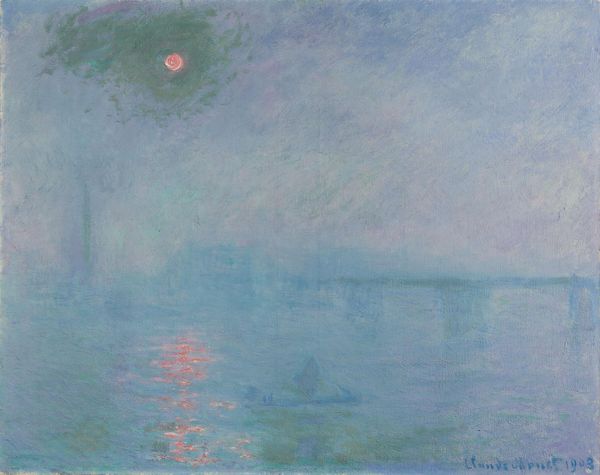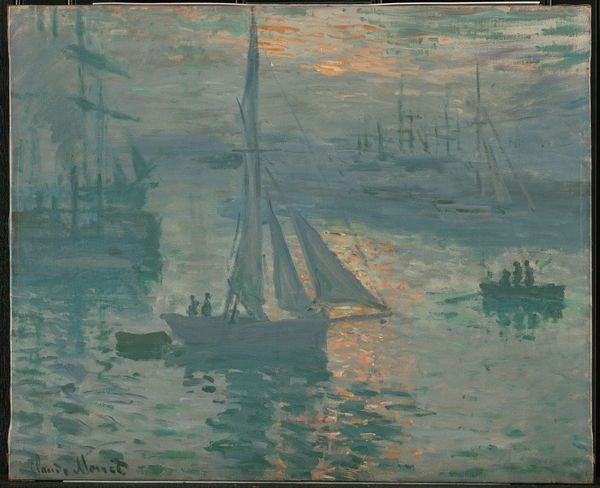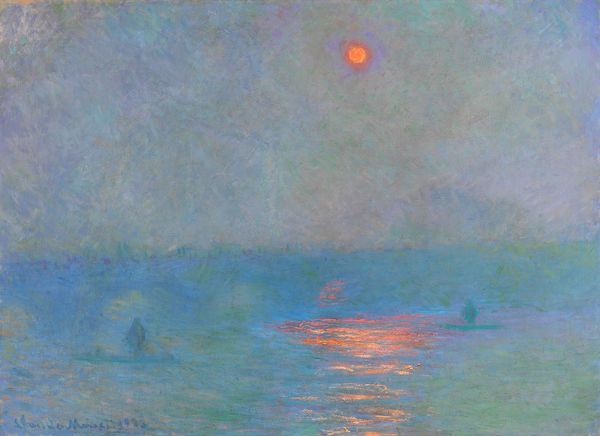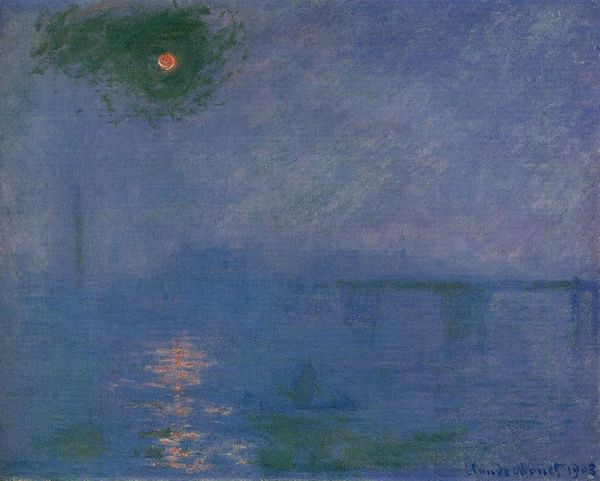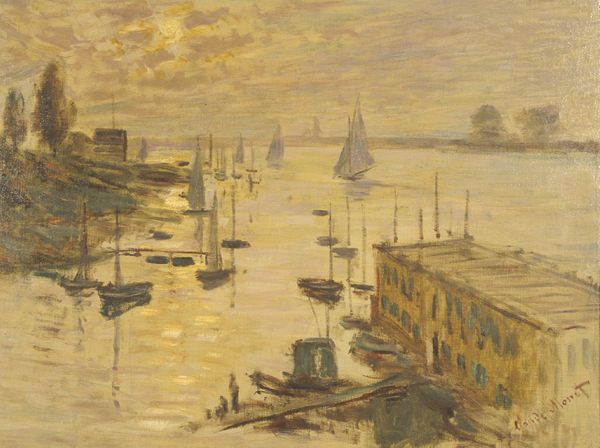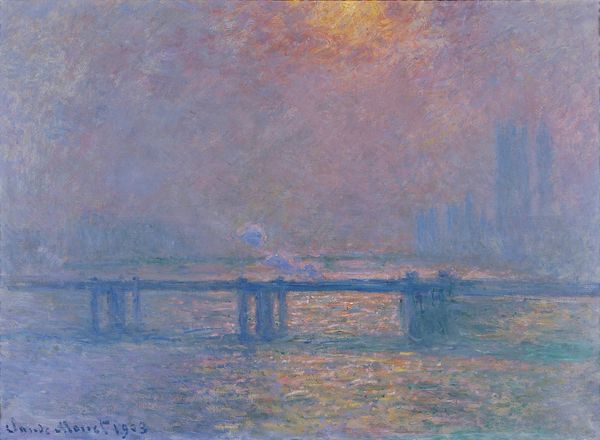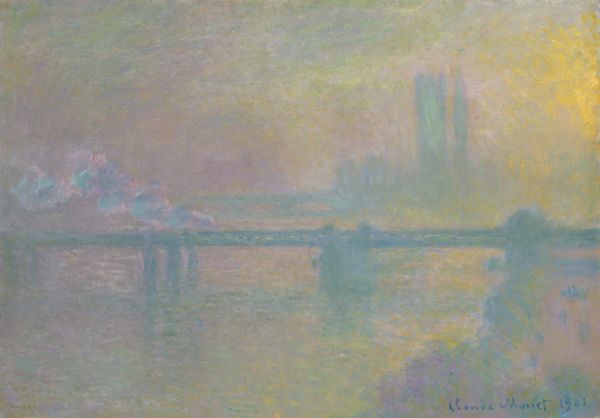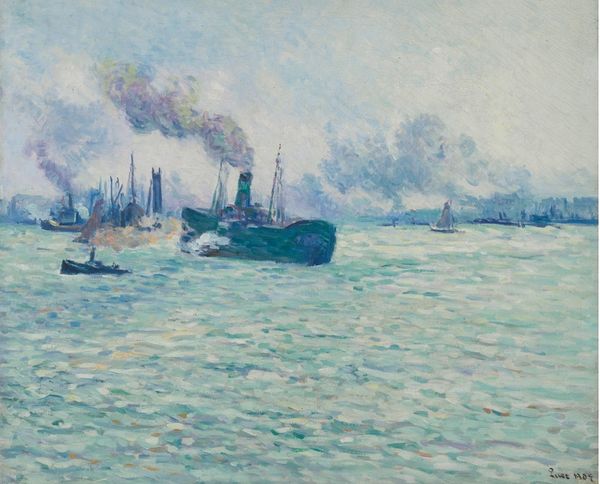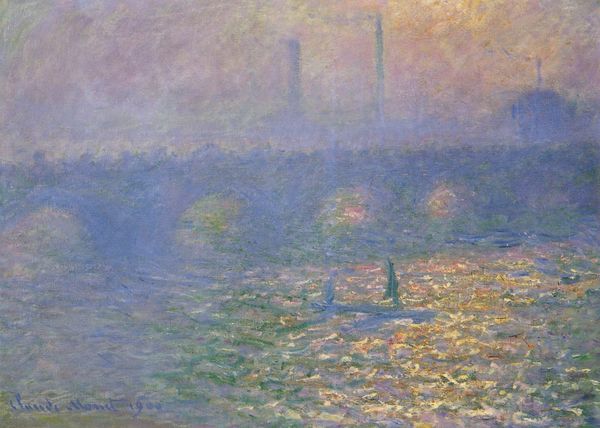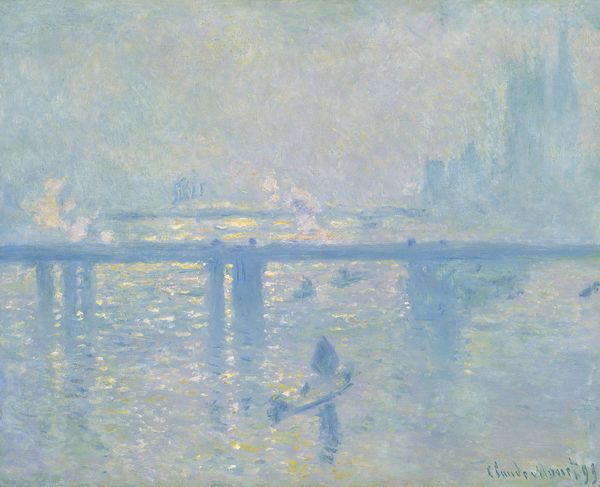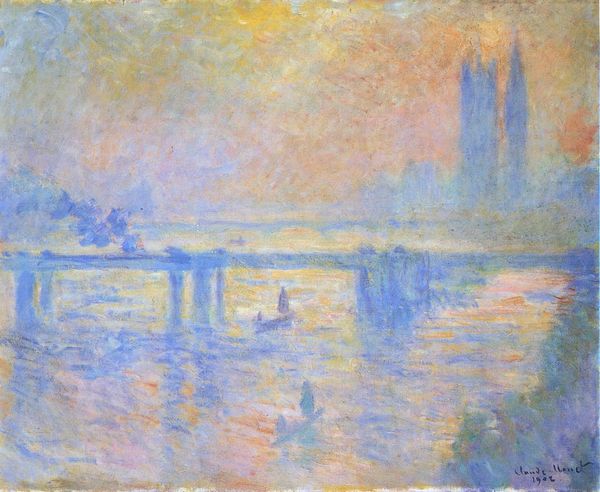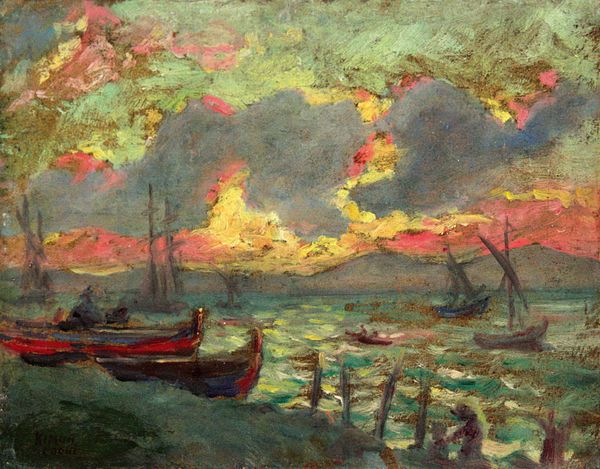
plein-air, oil-paint
#
sky
#
impressionism
#
plein-air
#
oil-paint
#
landscape
#
water
#
cityscape
#
modernism
Dimensions: 63 x 48 cm
Copyright: Public domain
Claude Monet painted "Impression, Sunrise" around 1872, using oil on canvas. The hazy depiction of Le Havre harbor is more than just a pretty picture; it’s a statement about the changing face of France. Painted in the aftermath of the Franco-Prussian War, it reflects a nation grappling with modernization and industrialization. Monet’s loose brushstrokes and focus on light rather than detail defied the academic painting of the time, challenging the established norms of the French art world. The title itself, supposedly coined on the spot when Monet was asked to exhibit it, underscores its fleeting, subjective nature. It marks a departure from historical painting towards art that reflects modern life. To truly understand this painting, we need to consider the rise of industrial capitalism, the growth of cities, and the changing role of art institutions in 19th-century France. By exploring period writings, exhibition records, and critical responses, we can appreciate how Monet's "Impression, Sunrise" not only captured a moment in time but also heralded a shift in artistic values.
Comments
Join the conversation
Join millions of artists and users on Artera today and experience the ultimate creative platform.
artera over 1 year ago
⋮
The artistic movement Impressionism owes its name to this influential work by Claude Monet (1840-1926). Impression, Sunrise was first shown in 1874 at an independent exhibition organized by a group of artists including Monet, Renoir, and Degas. The show served as an alternative to the traditional, state-run Salon, allowing artists to work in radically new ways. In a review of the exhibition, the critic Louis Leroy condemned Impression, Sunrise, arguing that it was nothing more than a sketch and, in a negative context, titled the show "The Exhibition of the Impressionists," a term that the group proudly adopted. Leroy's response is understandable: Monet's painting broke many artistic conventions. The artist's work does indeed have a sketchlike quality, due to his loose, broken brushwork that does not define what it represents. This technique is largely the result of the Impressionist desire to capture the fleeting moment en plein air. Impression, Sunrise was not executed in a studio but from a window overlooking the harbor of Le Havre from which Monet painted the modern city awakening at dawn, requiring quick brushstrokes before the view changed. Conversely, Impression, Sunrise is also a calculated work that shows an interest in color theory. While the sun appears to pierce the morning mist because of its intense orange color, in reality it has the same luminance as its surroundings. In a black-and-white photograph, the sun is almost indistinguishable, an effect that Monet did not achieve by accident.
